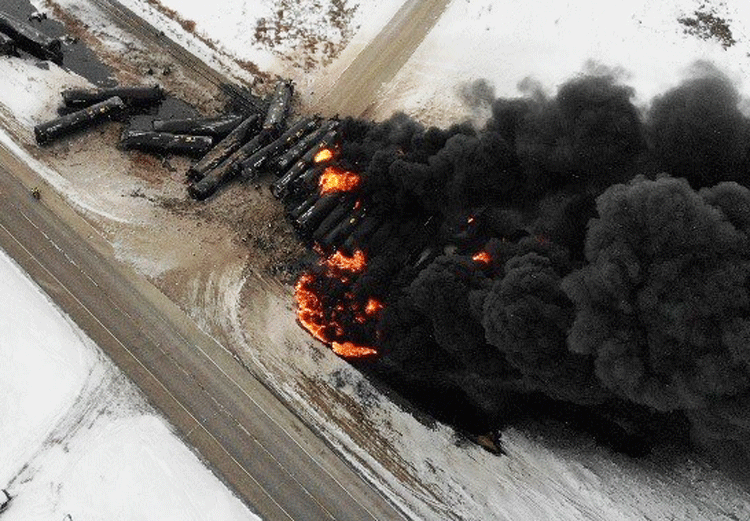MONTREAL — A Canadian Pacific oil train derailed, crashed and burned near the small community of Guernsey, Saskatchewan, Feb. 6, the second time this has happened there in two months.
With toxic smoke spewing into the air 80 people were forced to evacuate their homes. It took over 36 hours for firefighters to douse the flames. Luckily there were no injuries or deaths.
The derailment of the 104-car train is testimony to the fact that since 2013, when a runaway oil train exploded and killed 47 people in Lac-Mégantic, Quebec, the rail bosses’ drive for profits at the expense of safety continues.
The day after the derailment, Federal Transport Minister Marc Garneau ordered rail bosses to cut the speed of trains over 20 cars long that carry crude oil and propane, but for only 30 days.
The TC-117J tanker cars that burned at Guernsey were supposed to be puncture-resistant and met “all Transport Canada standards,” said Canadian Pacific bosses. They were designed to replace the kind of tanker cars that exploded in the Lac-Mégantic disaster.
Over the past few years the amount of crude oil being shipped by rail across Canada has skyrocketed — from 126,230 barrels a day in 2013 to 230,960 a day in 2018 — generating huge profits for Canadian National and Canadian Pacific.
“We are transporting bombs running on 1930 and 1940 infrastructure with neglected maintenance,” Robert Bellefleur, spokesperson for the Citizens Coalition Committed to Rail Safety in Lac-Mégantic, warned in La Presse two years ago.
The derailment at Guernsey shows that dangers to the environment and to working people’s lives are not primarily caused by which method is used to transport oil — pipelines or rail — but the fact that bosses control transportation and are indifferent to the impact of their cost cutting and speedup on workers’ lives.
Their relentless drive for profits underlines the need for rail workers to organize and use union power to defend themselves. Last December 3,000 Canadian National workers carried out an eight-day “strike for safety.”
Alyson Kennedy, Socialist Workers Party candidate for U.S. president, and Malcolm Jarrett, the party’s candidate for vice president, urge a fight to cut train lengths to a maximum of 50 cars and a crew of four — two on the front and two on the rear of the train — in order to make freight transportation safer for workers and those who live near the tracks.


